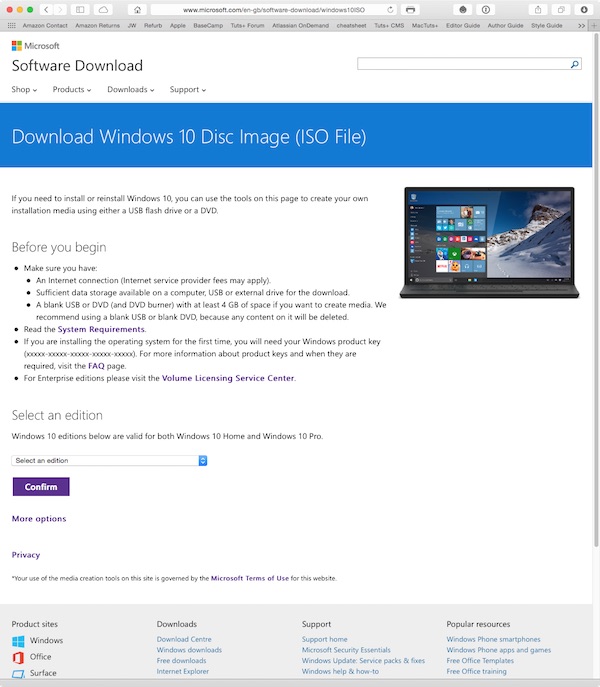
Make Bootable Usb For Mac With Windows
It works like this: If a friend or other visitor needs to use your Wi-Fi, then instead of digging in the dust and yanking on the already-taut cables of your router to read the password label on the back, you can just hold your iPhones close to each other, and grant the guest access to your network. Wifi sharing app for mac download.
The methods which I am using are, How to Create Bootable USB for Mac with TransMac? If you remembered, till MacOS sierra the Apple file system was Hackintosh, but MacOS 10.13 High Sierra has the technology of Apple Filesystem. That’s why we can’t create bootable USB with Windows tools.
With its effortless operation and thorough setup, GPG Suite for Mac represents a solid solution for encrypting e-mail. Its ability to work with the Mac Mail application, seamlessly, is an advantage over other programs. MacGPG is the engine on which the suite runs, and its functionalities can also be. Sophos Antivirus scans websites for malicious codes. It also blocks web-based malware before it can infect your Mac, protecting you from Internet Business-quality antivirus, backed by SophosLabs – We’ve put the entire force of our business-strength threat expertise behind Sophos Antivirus for Mac. Size: 207 MB. Category: Antivirus. User-friendly and reliable anti-malware application that helps you protect your Mac from a wide variety of threats such as viruses, spyware and other types of malware. After you uninstall Sophos Anti-Virus, the Scan with Sophos Anti-Virus command is still present in a Finder shortcut menu. It disappears when you log in to your Mac again. In Sophos Enterprise Console and Sophos Control Center, you can set up email alerting for Virus alerts, Scanning errors. 6. sophos antivirus for mac.
How to create a bootable Windows 10 USB on Mac 09 June 2017 on,, The last release of Mac OS doesn't have the option to create a bootable USB from Bootcamp like previous versions, and it is a problem because that require uses other tools. I am updating this post today Dec 12, 2018. The reason is that I was only using to create the bootable USB, I will leave guide as a second method since it still working, and I will explain to you how you can create the bootable Windows USB without extra software. The first step for both methods requires to format your USB device to ExFAT. Format USB to ExFAT In order to boot from the USB, you need to format the USB to ExFAT, you can do it using Disk Utility (it comes with MacOS). This step is the same for both methods.
You need to show all the devices in Disk Utility' before to start the process. Select your USB device in the list (not the partition), right click and then click on the Erase option: In the next screen make sure you select these two options: • Format: ExFAT • Scheme: Master Boot Record Click the Erase button. If for some reason it fails, probably is because MacOS still using the USB, just repeat the steps, but if you see a screen similar to above screen is because the operation is successful. Format USB with the terminal You also can format the USB from the terminal, but you have to take care to use the correct device because, if you use the wrong name you will lose everything. With this command you can list the device on MacOS: diskutil list This is an example, my USB is the disk2: This command is to format the USB, the last parameter is the the USB: diskutil eraseDisk ExFAT 'WINDOWS10' MBRFormat disk2 Copy Windows files to USB - Method 1 This process is very easy doesn't require to install other software, and they are just a few steps: Open Windows ISO Just double click on the ISO image, MacOS mount the image automatically. Copy files Now you only need to copy the files and paste them to the USB. • Command + A Select all files.
• Command + C Copy files. • Go to your USB Command + V paste the files. This process could fail if you are using a USB with FAT32 because the file install.win is over 4GB, if this is the case try to open the terminal and copy paste the files from there (no always works. Try to follow the instructions to format the USB in ExFAT, NTFS works for some BIOS). This is the command to copy the files from the ISO to the USB: cp -rp /Volumes/CCCOMA_X64FRE_EN-US_DV9/* /Volumes/WINDOWS10/ And that is all, now you can try boot from the USB.
UNetbootin - Method 2 I will show you how you can use to create a bootable USB, it can be used no only for Mac but for Windows and Linux distributions too. Is free software and it is also available for Windows and Linux. Check the path name of your USB Disk.
Always in Disk Utility, select the new partition that we created in the previous step, and click on the information button, it will give you the information about the new partition. You also can use the terminal and the command diskutil to see the list of drives: diskutil list Download UNetbootin: • Download the dmg directly from the. And copy the app to the /Application folder. • I prefer to use homebrew to install applications, you can check this article for more information:: brew cask install --appdir='/Applications' unetbootin Makes the USB booteable Open UNetbootin and you only need select 3 options: • Diskimage and ISO • Now we need open the ISO Windows image that is on our computer. • Select your USB device on UNetbootin.

• Click on the OK, button and wait to the process end it will take a time. NOTES: • I tested other tools like dd and Etcher but they are not working because Windows requires extra steps, for the moment this is the only easy tool that I know that works if you are on Windows try. • Some users reported that UNetbootin is not working, if after to format the USB drive and change the block size is not working for you try another Drive with enough space. Share this post.